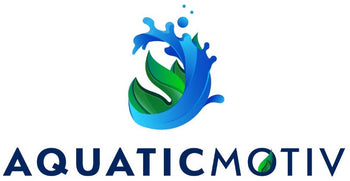PAR, a look at photosynthetically active radiation.
A topic of frequent discussion in planted aquarium circles is PAR (Photosynthetically Active Radiation). Within this article, the basic concepts regarding what PAR refers to will be explained.

PAR refers to the range of light wavelengths which plants can utilize in the physiological process of photosynthesis. Not all light can be used in large or any amount during photosynthesis, only a portion of the visible light spectrum is utilized in large amounts.
The range of wavelengths which plants can utilize is 400 nm to 700 nm. The visible light spectrum for humans includes the wavelength range of 380 nm to 750 nm. Other species have a narrower or wider spectral range that they can see depending on their physiology. Light wavelengths outside of that 400 to 700-nanometer range have negligible known effects on plant health and as a result are not important for this discussion.
An important note to keep in mind is how and why plants produce these stunning colors. The deeper and more vibrant colors you see in some species of plants are directly related to the amount of light they are being exposed to. For plants, these Xanthophylls and pigment cells develop as a result of high PAR lighting. This is because PAR not only refers to the wavelength range plants can utilize, but it also serves as an axis to measure PAR output or light intensity.

Let us cover PAR intensity and how it relates to light intensity. The amount of PAR output determines the intensity of the light produced which can be used in the process of photosynthesis. Typically in the aquarium hobby, we refer to PAR intensity as low, medium, or high light environments. Low light environments will have a measurable PAR intensity of 20 to 30 umols, medium light environments will have a PAR intensity between 30 to 50 umols, and high light environment’s PAR intensity starts between 50 to 90 umols and depending on the species of plant you are attempting to grow. Some species like Ludwigia white and Hygrophila chai require high output lights to grow in the 100-150 umol range as a minimum to grow them.

On the other side, low light plants like Ludwigia repens will grow slowly at a PAR intensity of 20 umols. Though because the PAR intensity is so low, the plant will remain green for the most part. The species Ludwigia repens will usually develop red coloration on the bottom of their leaves with green pigment dominating the top. Understanding what your PAR intensity is at various levels of the aquarium is important when choosing the right plants to grow in your aquarium. Keep in mind that as the light travels farther into the water’s depths, The PAR intensity will exponentially decrease. An example is the PAR chart of the Fluval 2.0 aquarium light, at a 3” depth PAR output is 453 umols. At a depth of 6” the PAR output is 252 umols. At a depth of 12” the PAR output is 100 umols. Finally, at a depth of 18” the PAR output is only 57 umols. This only measures directly below the light, so this PAR chart does not account for the loss in intensity from the overall spread.

The highest PAR output lights on the market are typically quite expensive, because they are utilizing the newest technology available to create customizable and high PAR output lights. While balancing all of the color spectrums to increase the contrast between different colored plants within the aquarium. The most expensive lights often allow you to modify the specific
spectrum's intensity to give you more control over the light spectrum you are producing. Look up some of the lighting options which AquaticMotiv carries!
Some of the most highly regarded brands on the market currently are Chihiros, Netlea and Week Aqua. For your convenience each one of these brands can be found in the AquaticMotiv store.
Written by Jacob Thompson
Imagery by AquaticMotiv Llc


1 comment
Jesus Rivera Galan
Great information!